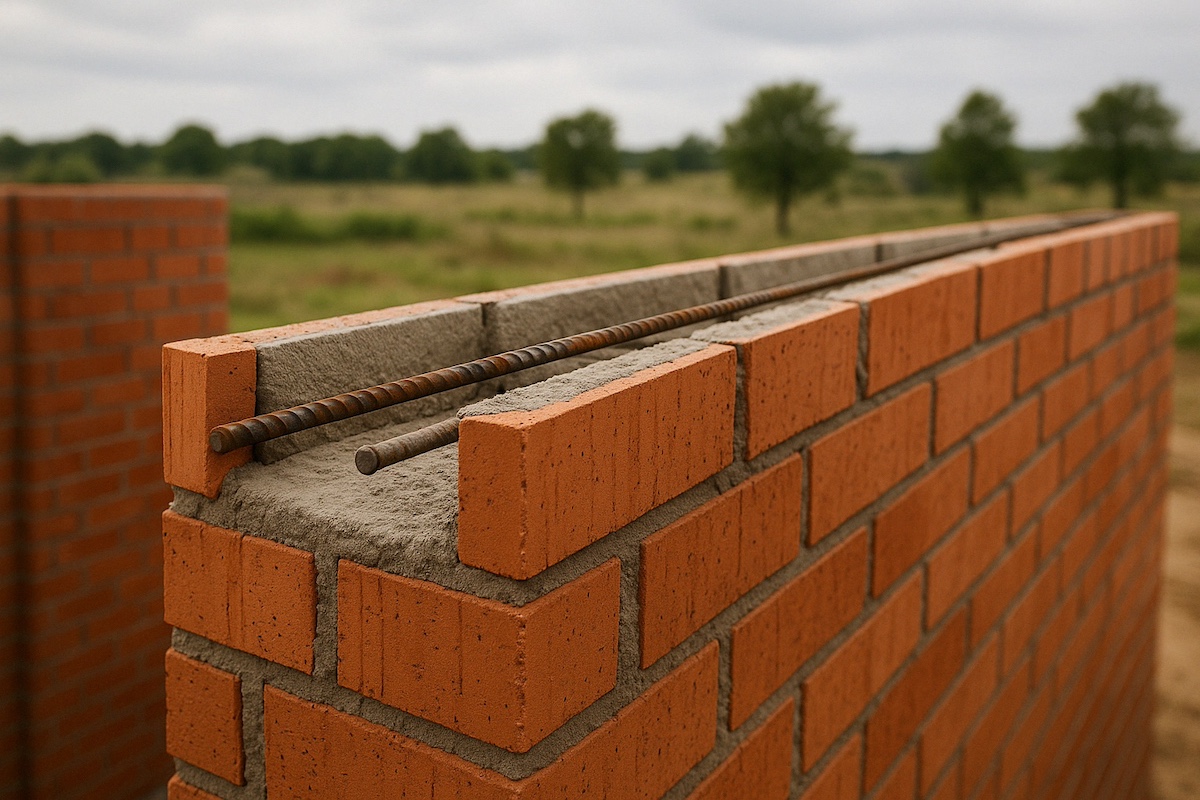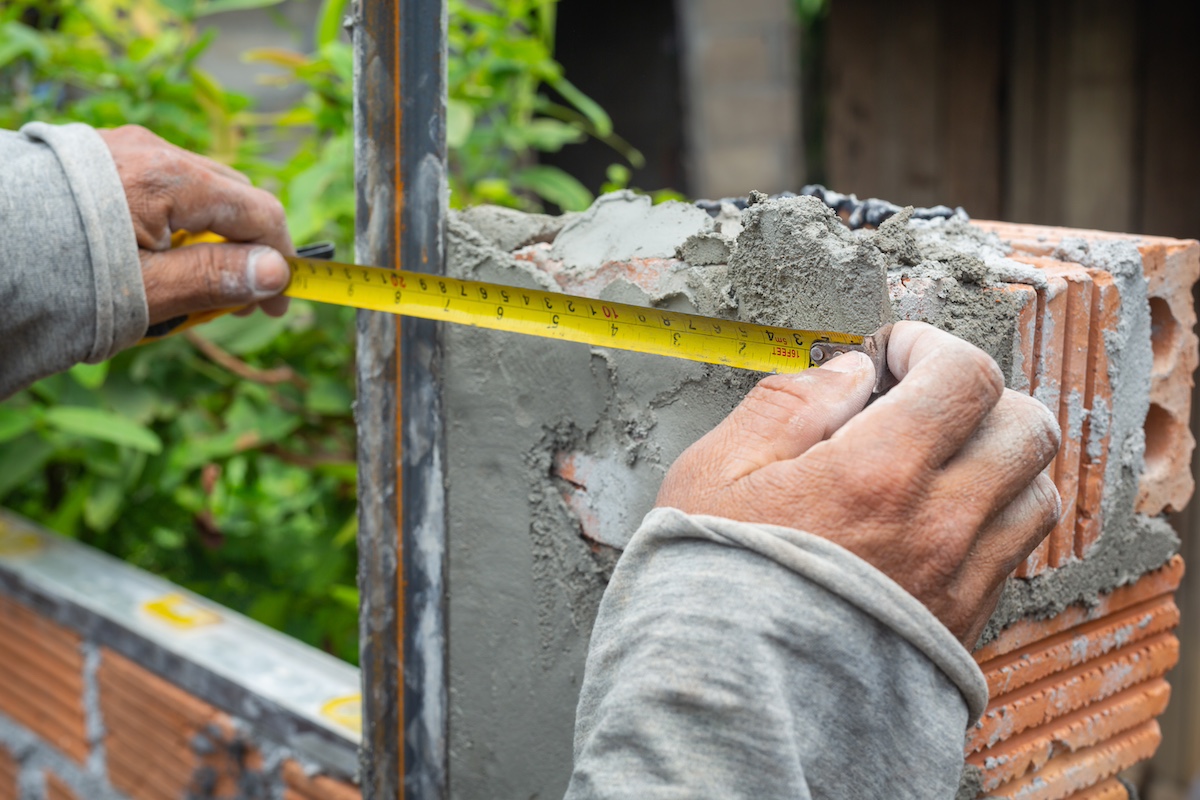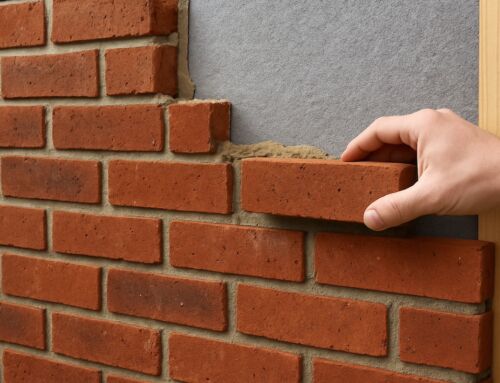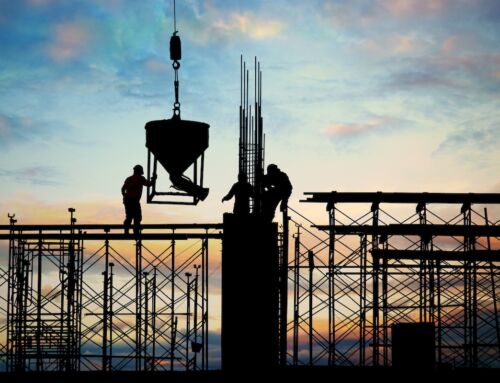In masonry construction, a bond beam plays a crucial role in enhancing the strength, stability, and integrity of structures. Whether you’re a construction professional or a homeowner curious about masonry walls, understanding bond beams is essential. This guide will explore what bond beams are, how they work, their benefits, and their role in construction projects.
What is a Bond Beam?
A bond beam is a horizontal structural component integrated into masonry walls to reinforce and stabilize them. It’s typically made from concrete masonry units (CMUs) designed with channels or grooves to hold horizontal reinforcement.

These grooves are filled with grout and embedded steel reinforcement bars (rebars), creating a continuous beam that ties the wall together horizontally.
Key Features of a Bond Beam
- Materials: Bond beams are usually constructed with CMUs, grout, and steel reinforcement.
- Placement: Commonly placed at the top of walls, around openings, or at regular intervals along the height of a wall.
- Purpose: They provide structural support, distribute loads evenly, and resist lateral forces like wind and seismic activity.
Purpose and Function of a Bond Beam
Bond beams are integral to masonry construction for several reasons:
1. Structural Reinforcement
Bond beams prevent cracks in walls and enhance overall stability by providing horizontal reinforcement. This is particularly important for tall or load-bearing walls.
2. Load Distribution
They help distribute loads from above (like the weight of roofs or floors) evenly across the structure, reducing stress points and potential damage.
3. Integration with Structural Elements
Bond beams serve as anchorage points for connecting other structural components, such as lintels, columns, and roof trusses.
4. Seismic Resistance
In earthquake-prone areas, bond beams improve a wall’s ability to withstand lateral forces, reducing the risk of collapse.
Types of Bond Beams
Bond beams can be tailored to meet specific structural needs. Here are the main types:
1. Horizontal Bond Beams
These are placed at specific intervals along a wall to reinforce it horizontally and improve its load-bearing capacity.
2. Continuous Bond Beams
Used to provide uniform reinforcement across the entire length of a wall, continuous bond beams are ideal for larger structures.
3. Stepped Bond Beams
Designed for sloping or stepped walls, these beams ensure consistent reinforcement, even in non-linear structures.
Construction Process of a Bond Beam
Building a bond beam requires careful planning and execution. Here’s a step-by-step breakdown:
Step 1: Preparation
- Design: Determine the placement and specifications of the bond beam based on structural requirements.
- Materials: Choose high-quality CMUs, steel reinforcement, and grout.
Step 2: Installation
- Laying CMUs: Use special bond beam blocks with channels or notches to create the beam.
- Adding Reinforcement: Insert steel rebar into the channels to provide horizontal strength.
- Grouting: Fill the channels with grout to encase the reinforcement and create a solid beam.
Step 3: Integration
- Alignment: Ensure the bond beam aligns seamlessly with the rest of the masonry wall.
- Curing: Allow adequate time for the grout to cure, ensuring maximum strength.
Advantages of Using Bond Beams
Bond beams offer several benefits that make them indispensable in masonry construction:
- Enhanced Durability: They increase the lifespan of masonry walls by reducing cracking and damage.
- Improved Seismic Performance: Bond beams help structures withstand earthquakes by providing lateral reinforcement.
- Increased Load Capacity: Walls reinforced with bond beams can bear heavier loads without compromising stability.
- Better Structural Stability: They prevent walls from bowing or collapsing under pressure.
Applications of Bond Beams in Masonry
Bond beams are versatile and used in various construction scenarios:
1. Residential Buildings
In homes, bond beams provide reinforcement for walls supporting roofs or floors.
2. Commercial Buildings
In commercial structures like offices and schools, bond beams enhance wall stability and help meet building code requirements.
3. Retaining Walls
Bond beams prevent soil displacement and improve the durability of retaining walls.
4. Industrial Structures
Factories and warehouses benefit from bond beams’ ability to handle heavy loads and resist lateral forces.
Challenges in Bond Beam Construction
While bond beams are essential, their construction can pose challenges:
Common Issues
- Incorrect Placement: Misaligned beams can weaken the structure.
- Poor Grouting: Inadequate grouting reduces the beam’s strength.
- Improper Reinforcement: Missing or misaligned rebar can compromise stability.
Solutions
- Follow best practices during construction.
- Conduct regular inspections to ensure quality.
- Use experienced professionals for installation.
Bond Beams and Seismic Design
Bond beams are especially critical in seismic zones. Their horizontal reinforcement helps masonry walls withstand the lateral forces generated by earthquakes. By tying walls together and distributing stress evenly, bond beams reduce the likelihood of catastrophic failure.
FAQs
1. What is the difference between a bond beam and a lintel?
A bond beam is a horizontal reinforcement element running along the length of a wall, while a lintel is a horizontal beam placed over openings like doors and windows to support the weight above them.
2. Do all masonry walls require bond beams?
Not all walls require bond beams. Their use depends on the wall’s height, load requirements, and location in a seismic zone.
3. What materials are used for bond beam construction?
Common materials include CMUs, grout, and steel reinforcement bars (rebars).
4. How are bond beams reinforced?
Reinforcement is achieved by placing steel rebar within the grooves of bond beam blocks and filling them with grout.
5. Can bond beams be retrofitted in existing walls?
Yes, retrofitting bond beams involves cutting into existing walls, inserting reinforcement, and grouting the channels. It’s a specialized process best handled by professionals.
6. What is a bond beam in masonry?
A bond beam is a horizontal structural element used in masonry construction to provide strength, support, and stability to a wall. It is typically made from reinforced concrete and is integrated with the masonry units to distribute loads and resist lateral forces.
7. What is the purpose of a bond beam?
The primary purpose of a bond beam is to enhance the structural integrity of a masonry wall. It ties the wall together, distributes loads evenly, and prevents cracking or failure under stress, especially during seismic activity or heavy wind loads.
Conclusion
At Dixon Inc., we understand the critical role that bond beams play in ensuring the stability and durability of masonry structures. With decades of expertise in commercial construction, we specialize in delivering high-quality solutions tailored to meet your specific needs.
Whether you’re constructing a new building or reinforcing an existing one, our team is equipped to handle all aspects of bond beam installation with precision and care. Trust Dixon Inc. to bring strength and reliability to your masonry projects. Visit our website to learn more about our services and how we can support your next construction endeavor.





